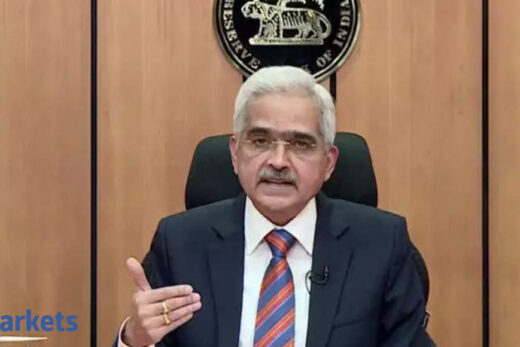Over the past couple of years, as the government’s debt issuances have ballooned, the Centre has had to increasingly rely on its debt manager, the RBI, to ensure smooth passage of the borrowing programme.
At the present juncture, however, the RBI could be caught in a bind between handling a burgeoning surplus of liquidity in the banking system and supporting the sovereign debt market.
The principal method in which the central bank lends a helping hand to the bond market is by purchasing dated securities through open market operations and hence reducing the load of gilt supply. It has consistently done so over the last few years in order to keep bond yields –and hence the government’s borrowing costs –under control.
However, when the RBI acquires dated securities in the open market, the central bank is also infusing durable liquidity in the banking system. And in the current scheme of things, that is what is complicating matters.
At present the core liquidity, which is the sum of liquidity in the banking system and the funds that the government is sitting on, has risen past Rs 10 lakh crore. This surfeit of liquidity will remain as Treasury Bills worth around Rs 1.7 lakh crore are set to mature in the Jul-Sep quarter.
Moreover, the central bank has also committed purchases of government bonds worth Rs 1.2 lakh crore in the current quarter under its ‘Government Securities Acquisition Programme 2.0’.
It is true that by maintaining surplus liquidity conditions in the banking system, the RBI has ensured that credit costs remain low at a time when the COVID-19 pandemic has taken a toll on aggregate demand in the economy.
However, permitting the surplus to swell even more brings with it attendant inflationary risks, primarily in the form of bubbles in financial asset prices. This at a time when the consumer price inflation is already well past RBI’s comfort zone.
The RBI would also be mindful of the fact that the larger the liquidity surplus, the more painful it would be to wean markets off the easy cash when fundamentals warrant a change in liquidity management.
After all, economic growth, while still fragile, will gather steam as the pace of vaccinations pick up and as more and more businesses adjust to the realities of functioning during the pandemic.
Subtle shift?
In what could be a signal, the RBI has refrained from announcing any open market operations since last week despite widespread market expectations of the same.
The market’s anticipation was based on the fact that the central bank devolved a hefty portion of the recently-introduced 10-year benchmark 6.10%, 2031 gilt on the books of primary dealers at last Friday’s primary auction.
The devolvement, which was the RBI’s way of expressing discomfort with high yields demanded by investors, reflected the weak underlying demand for government securities amid huge supply pressures.
The RBI had set a cutoff of 6.15% at the last auction of the 10-year benchmark bond, implying that it is uncomfortable with yield on the bond rising beyond that mark. However, the bond has gone on to take a fresh beating in the secondary market since the auction, with its yield currently at 6.21%.
It is possible that the RBI is letting yields drift up to adjust to the realities of high inflation and heavy bond supply. But, it does seem incongruous that the central bank would be overtly pleased with a new 10-year benchmark bond witnessing an 11 basis point rise in its yield (corresponding to a fall of 77 paise in its price) in just three weeks.
Unless the RBI steps in to purchase the 2031 paper under open market operations, treasury officials see yield on the benchmark security rising even further in the coming days.
“There is only one way to bring back yield on the 2031 bond back to the 6.15% handle that the RBI set at the last auction and that is by buying the bond,” a senior dealer in a large foreign bank said on condition of anonymity.
“The next auction of the 2031 bond will likely be on the day before the RBI’s policy. If no OMOs are forthcoming, the RBI will probably devolve it again because traders will not bid below 6.20% if levels remain where they are,” he said.
Two other bonds which have faced the market’s ire are the 5.63%, 2026 paper and the 6.64%, 2035 paper – the two securities which are currently most traded in the secondary market. With the RBI picking illiquid bonds as candidates for its recent rounds of ‘G-SAP’ purchases, these papers have borne the brunt of the market’s dissatisfaction.
Since last Friday’s auction, yields on the 2026 and 2035 bonds have climbed by 5 basis points and 7 basis points, respectively.
“The market’s hope was that RBI would come out with a small OMO including the 5-year bond, the 10-year bond and the 14-year bond. That would have gone a long way in assuaging market sentiment,” a senior dealer with a large private bank said.
“Just GSAP is not enough to balance the scales of demand and supply. The GSAP works out to be roughly Rs 10,000 crore per week whereas the weekly supply of state and central government bonds is around Rs 50,000 crore. Nobody will have courage to buy the 10-year bond right now if you don’t know that you can sell it at a lower yield and for that RBI has to come in,” he said.
What has puzzled the market more is the RBI’s reluctance to conduct special open market operations or ‘Operation Twist’. Under these operations, the RBI simultaneously purchases and sells government securities of an equal quantum, hence neutralizing the liquidity impact on the banking system.
Typically, the RBI buys longer-maturity bonds and sells short-term papers such as T-bills. In fact, the RBI is currently estimated to be holding Rs 20,000 crore worth of 6-month T-bills which could be utilized in special OMOs.
“It is possible that here too, the liquidity factor is playing out because after all the T-bill will mature in 6 months while the papers bought will be of 5-year, 10-year and 14-year maturity,” the treasury official with the foreign bank said.
RBI’s job could be a bit easier in the Oct-Dec quarter as typically there is a natural increase in currency in circulation – and hence a reduction in banking system liquidity – during the festive season.
But for the next couple of months, policymakers in Mint Street have the unenviable task of deciding which of their priorities are more crucial than the other.



